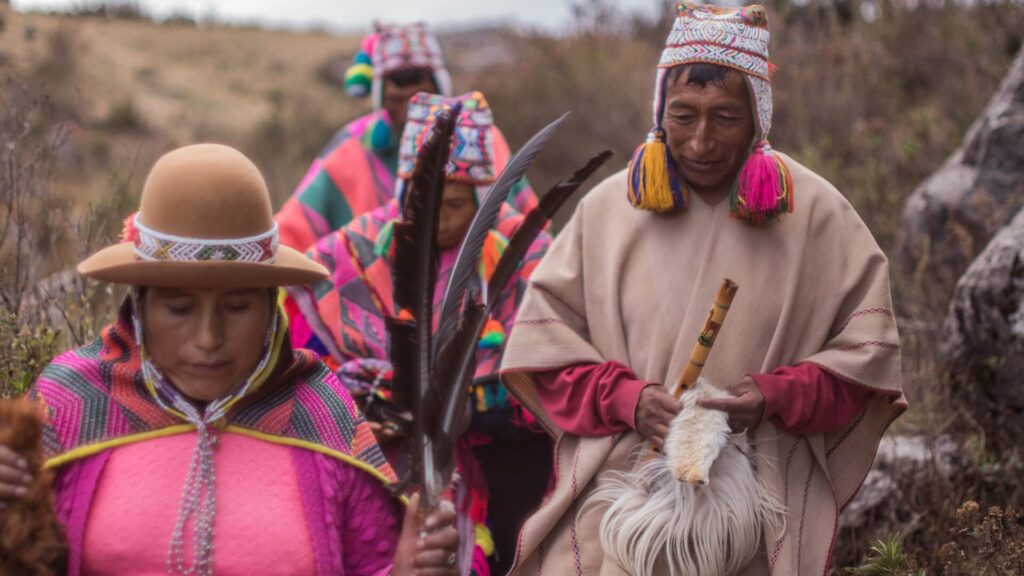A blood curdling wail erupts from a woman laying down on her back. She reveals later she was communing with the spirit of her recently deceased grandmother. The reserved man in the corner is being transported through time to confront a sexual predator who abused him as a teenager. Nearby, another heavy breathing lady has involuntary full body shakes. She described it as an exorcism from the toxic hold of her ex-partner and all the people who ever made her feel unworthy of love.
To a sober outsider walking in, this may seem overwhelming to step into a room full of people bursting out in a wide spectrum of emotional catharsis. All of these people have come for a deep transformation on a psychedelic retreat to release old traumas that have been keeping them from moving forward in life. And this trend is only on the rise. According to Data Bridge Market Research, the global psychedelic market is projected to reach $10.7 billion by 2027, with Peru containing the highest concentration of legal plant medicine retreat centers.
The indigenous people of South America have been using medicinal plants like ayahuasca and San Pedro cactus for centuries for visionary experiences and deep healing. In a sacred ceremonial space, a shaman connects with the spirit of the plants to help individuals reconnect with Nature, and in doing so, healing naturally takes place. The ingesting of these natural occurring hallucinogens is like a homecoming for most, after they move through the heaviness of all their inner obstacles.
Will Smith described his ayahuasca experience in his autobiography as his “first tiny taste of freedom.” He was able to understand the “If I’m this beautiful, I don’t need #1 movies to feel good about myself. If I’m this beautiful, I don’t need hit records to feel worthy of love. If I’m this beautiful, I don’t need Jada or anyone else to validate me.”
In the movie Crystal Fairy & The Magical Cactus in 2012, Michael Cera and Gaby Hoffmann were both on a journey to drink psychedelic San Pedro on a Chilean beach. And the actors actually drank it for real on set while filming. Hoffmann recounted a very sensory based and joy filled experience. “It was just a beautiful, mellow experience and I was in the most gorgeous spectacular place that you could imagine.”
The Body as a Key to Transformation
Amanda Baker, clinical psychologist and director of the Center for Anxiety and Traumatic Stress Disorders at Massachusetts General Hospital runs a department where they use somatic therapy to help traumatic events and emotional issues release from the body. The Adverse Childhood Experiences Study (ACEs) in the 1990s made the connection between childhood abuse and adult obesity. In the book The Body Keeps the Score, Dr. Van der Kolk uses “recent scientific advances to show how trauma literally reshapes both body and brain, compromising sufferers’ capacities for pleasure, engagement, self-control, and trust.” With the book holding its place on the New York Times bestseller list for more than four years, the body storing trauma is not a foreign concept to the public.
So it is no wonder that people of diverse backgrounds who are finding themselves at a crossroads are heading to South America for mind-altering psychedelic retreats. Conventional methods are creating more co-dependency rather than drastic improvement. They might be tired of the usual talk therapy — speaking about the same triggers for a decade, or becoming so dependent on medications like sleeping pills or antidepressants that leaves a negative impact on their gut health.
The ancient yogis and Chinese Medicine Doctors have scores of literature that go into detail about where emotional patterns are stored in the body. The body holds the stories of our lives, each with its own energy signature. Joyful memories expand the heart, while shame and guilt weigh down the bowels. For true transformation to take place, the western model for mental health must learn to accept that addressing only the mind is not a complete picture.
Healing through the Medicine Wheel
In Peru, one’s personal evolution as well as their healing journey revolves around what is known as the medicine wheel. It is composed of the four cardinal directions, and each direction contains a guardian in the form of an animal spirit who acts as a guardian. This indigenous wisdom has been used for centuries to help reconnect with the rhythm of nature. The snake in the South teaches us how to shed old stories of the past and to reconnect to the element of Earth. The puma in the West gives us courage to mend the emotions we have towards ourselves and others through the element of water. The hummingbirds of the North show the way towards finding joy in our work and to work for our joy on the path of fire. And in the East, the condor helps us to soar through the air to dream a harmonious reality into being.
The medicine wheel may seem simple and almost like something out of a children’s fairy tale. However, if you look at all modern day stress, it is directly related to neglecting simplicity for complexity. The shamans say the symbols of what each of these power animals represent speaks to the soul versus the mind. When you can suspend the paralysis-analysis of the mind to embrace the simple wisdom of Nature, the primary human emotion of wonder is restored. Wonder leads to hope and infinite possibilities, and this is really all someone on a healing journey is searching for.
A Contemporary View on Shamanic Healing
Traditionally, when a shaman takes you through a plant medicine ceremony, there are various icaros or healing songs that are played in the space. The intention is to allow the music to transport you into deeper parts of yourself. A lot of the ceremony is through song or non verbal. Oftentimes, when participants come out of the experience, they may find it difficult to make sense of these weighty dream-like experiences.
The Western mind is a bit more booby-trapped than someone who was steeped in the living wisdom of the jungles or high mountains. This is why it is paramount on retreat that we do reflective work through journaling, creative writing and sharing to process all the mystical experiences we encounter. We also go through coaching sessions to distill the main takeaways from our experiences, so that we can apply these realizations into real time when we go home to our busy urban lives.
By blending yogic and Buddhist philosophy, which has a strong emphasis on getting to the root of suffering in the mind, coaching, breathwork, meditation with the healing practices of the indigenous shamans, we have a substantial approach to supporting total healing of the mind, body and heart.
Each participant arrives with their own story, a weight they carry in their hearts and bodies. Memories of heartbreak, family conflicts, and self-doubt manifest as physical and emotional pain. On retreat unforgettable bonds with strangers who are on a similar journey is part of the unexpected healing that takes place. It is through a vulnerable sharing of each person’s hidden stories, that they discover they are not alone, and that each person has the power to compost their challenges into new strengths.
Embark on a Deeply Healing Transformation
Peru’s sacred sites, charged with centuries of spiritual practice, offer a palpable sense of peace and transformation. Even the most skeptical visitors feel the land’s unique energy. With its rich tapestry of myths and sacred traditions, Peru offers a unique path to inner peace. Here, the ancient wisdom of the Q’ero shamans and the vibrant energy of the land invite those who are willing to embark on a journey of self-discovery and healing.
If you’re ready to break free from internal blocks and embrace a life of joy and purpose, join us for the Peru Shamanic Healing Retreat from July 11-20, 2025. More info here.


